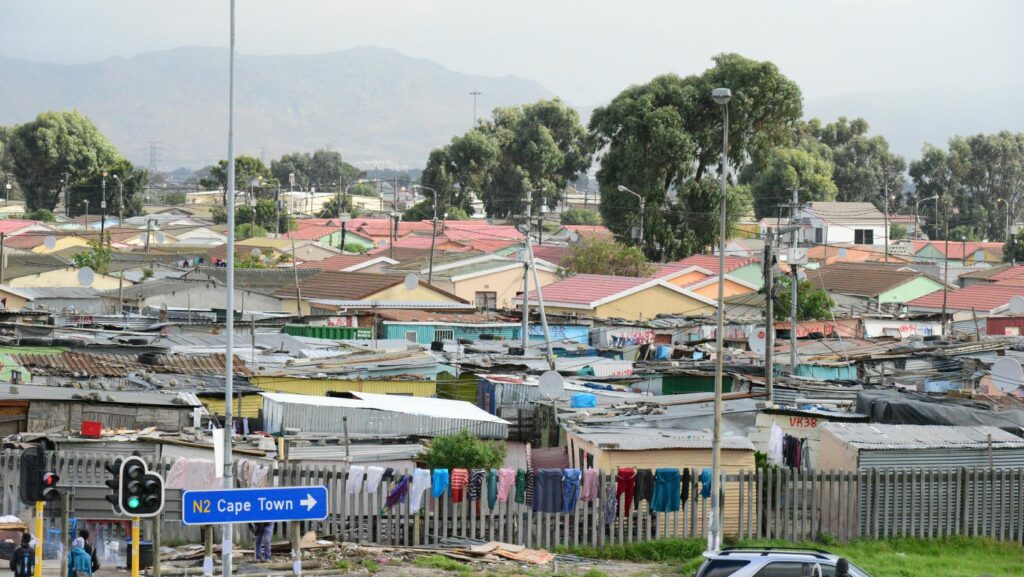Peering into the heart of South Africa, one can’t help but notice the vibrant and dynamic townships. These bustling communities are more than just residential areas; they’re the pulsating veins of South African society, rich with culture, history, and a resilient spirit that’s truly captivating.
Yet, townships aren’t just about the past. They’re evolving, transforming into hubs of innovation and entrepreneurship.
So, let’s embark on a fascinating journey into these townships, exploring their past, understanding their present, and envisioning their future. It’s more than just a trip; it’s a deep dive into the soul of South Africa.
Township South Africa

Townships in South Africa trace their roots back to the apartheid era. Intimately linked to this period of racial separation, they emerged out of the government’s forced removal policy. It relocated non-white populations to designated areas, creating township settlements on the outskirts of cities.
The Apartheid Era and the Formation of Townships
For example, Soweto, one of the largest and most recognized townships, became home to thousands displaced from Johannesburg. These townships, despite tough living conditions, thrived as vibrant communities fiercely resisting discriminatory policies.
Post-Apartheid Developments
Once a symbol of oppression, townships have now evolved into spaces of cultural celebration and economic innovation. The end of apartheid in 1994 brought significant changes, spurred by a multiracial government’s commitment to reform. Townships have witnessed a proliferation in businesses, from food enterprises and craft markets to tech startups. This transformation is evident in places such as Khayelitsha in Cape Town, now considered an innovation hub. Despite lingering challenges of poverty and unemployment, townships continue to be pivotal in shaping South Africa’s socio-economic landscape, embodying resilience and potential in their ongoing metamorphosis.
The Cultural Tapestry of Township Life

In the tapestry of township life, cultural expression flourishes, revealing the vitality of South Africa’s heartland. From music and dance to culinary delights, each thread signifies an affirmation of identity and community spirit.
Music and Dance A Vibrant Expression of Identity
Music and dance serve as powerful embodiments of identity in South African townships. They’re more than mere pastimes, they’re profound modes of expression and communication. Kwaito, a music genre that emerged in the townships during the 1990s, resonates with poignant nuances of struggle and resilience. Artists like Brenda Fassie and DJ Cleo made significant contributions, setting themselves as acclaimed figures in the national soundscape.
Dance plays an equally significant part in this vibrant culture. Pantsula dance, for example, not only showcases formidable footwork but also narrates stories of the townships. Born amidst socio-political strife, Pantsula developed as a coded language through dance, making it a potent symbol of resistance and unity.
Traditional Cuisine A Taste of Local Flavors
The culinary culture of South African townships paints a rich palette of flavors. Traditional meals aren’t just nutritional sustenance, they’re steeped in communal bonding and cherished customs. Dishes like biltong, a dried, cured meat, and boerewors, a farm-style sausage, provide scrumptious snapshots of township life.

Walkie-talkie, a dish made from chicken heads and feet, offers a deeper dive into culinary roots. It’s not just a popular local dish, but a reflection of the need-driven kitchen practices that emerged from the hardships under apartheid. This resilient spirit continues to season the gastronomic landscape, making township cuisine an integral part of South Africa’s cultural identity.
Conclusion
South Africa’s townships are a testament to the nation’s resilience and capacity for transformation. Once symbols of division, they’ve evolved into dynamic cultural and economic powerhouses. Soweto and Khayelitsha, among others, embody this change, their vibrant spirit reflected in music, dance, and cuisine. From Kwaito’s defiant beats to the communal joy of Pantsula dance, from the rustic flavors of biltong to the communal bonding over Walkie-talkie, these townships are a celebration of identity and community. They’ve turned their history into strength, shaping South Africa’s socio-economic fabric with their cultural richness. The story of these townships isn’t just about survival; it’s about thriving against the odds and making an indelible mark on the world.
